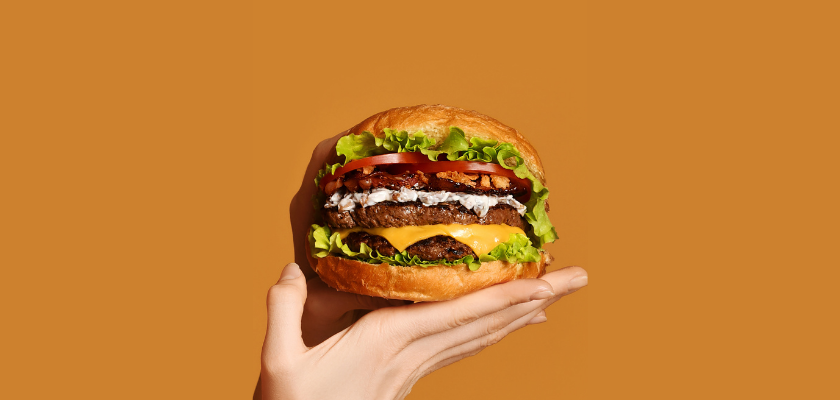5 Digital Marketing Strategies for Fast Food Restaurants: Unveiling the Recipe for Digital Success
Do you ever wonder how your favorite fast food restaurant manages to stay ahead in the fierce competition, constantly tempting your taste buds and making your tummy rumble with its delectable offerings? The solution can be found in the fascinating realm of fast food restaurant digital marketing tactics!
In today’s ever-connected world, the secret sauce to success for fast food restaurants is their ability to harness the power of digital marketing strategies.
In this article, we are about to unveil the very strategies that keep fast food restaurants at the top of their game, satisfying not only your cravings but also captivating millions of hungry souls across the digital landscape.
Join us as we explore the magic behind fast food marketing strategies and reveal the game-changing marketing strategies that leave customers wanting more.
The Importance of Digital Marketing for the Fast Food Industry
Embracing digital marketing offers numerous benefits that can significantly impact a fast food restaurant’s success.
From reaching a wider audience to gaining invaluable insights into customer preferences, digital marketing paves the way for new success stories.
Let’s look at its benefits one by one but before diving deep, check out our digital marketing marketplace. It’s filled with high-quality digital agencies ready to present their best offers to you! Once you find a marketing agency in the marketing marketplace that captures your heart, you can breathe a sigh of relief knowing that every opportunity in the digital marketing world is being leveraged for your fast food brand.
1. Wider Reach and Increased Visibility
Through digital marketing channels such as social media and search engines, fast food restaurants can reach a broader audience and increase their online visibility. Engaging content and targeted advertisements can capture the attention of potential customers, driving more traffic and orders.
2. Enhanced Customer Engagement
Fast food restaurants now have the means to interact directly with their customers through various digital channels. Social media platforms, in particular, have become a powerful avenue for restaurants to respond to feedback, address queries, and build meaningful relationships with their audience.
By embracing social media as part of fast food digital marketing strategies, restaurants can engage with their customers on a personal level, fostering loyalty and encouraging repeat business.
3. Data-Driven Insights
Data is the backbone of any successful marketing campaign, and fast food restaurants are no exception, of course. With the help of digital marketing, restaurants can now tap into a wealth of data-driven insights to inform their strategies.
By analyzing digital marketing data, including online interactions, customer preferences, behavior, and demographics, fast food restaurants can gain invaluable knowledge about their target audience. And armed with this information, these restaurants can tailor their marketing strategies to cater to specific customer segments and create personalized offers.
4. Cost-Effectiveness
Unlike traditional advertising methods that involve significant expenses, digital marketing allows restaurants to leverage online advertisements precisely targeted to specific audiences. By reaching the right people at the right time, fast food restaurants can reduce wasted ad spend and maximize their return on investment.
This cost-effectiveness is a significant advantage for fast food chains looking to make the most of their marketing budgets and drive success in a highly competitive market.
Marketing Strategies for Fast Food Restaurants
It’s not just the enticing aromas; it’s their mastery of digital marketing strategies that keep the fast food brands ahead of the pack.
Let’s take a closer look at the well-guarded ingredients that make fast food restaurants thrive in the digital age.
1. Mouthwatering Visuals
Imagine scrolling through your feed and stumbling upon a sumptuous image of a sizzling burger, adorned with melted cheese and fresh toppings. Your eyes lock onto the crispy golden fries, perfectly seasoned and served alongside a refreshing beverage. The visual feast is so vivid that you can almost taste the flavors, and before you know it, you find yourself craving that very meal.
When we look at the McDonald’s ads, for example, which take on an important part in McDonald’s marketing strategy, we just can’t stop thinking about ordering a delicious meal:
These carefully crafted, high-quality visuals are the secret ingredients that make fast food restaurants stand out in the digital landscape. They are strategically shared across social media platforms and the restaurant’s website, where they act as irresistible invitations for customers to indulge in their favorite treats.
2. Influencer Partnerships
In the age of social media influencers, a single recommendation holds the power to spark a food frenzy. Fast food restaurants have harnessed this influence to reach a wider audience by collaborating with popular personalities in the food and lifestyle niche. Imagine a famous food influencer, beloved by thousands of followers, raving about a new burger joint. With a simple post or story, they create a viral buzz around the restaurant’s offerings, piquing the curiosity of their devoted followers.
These influencers skillfully whip up engaging content featuring the restaurant’s most delectable dishes. They capture every scrumptious detail and share their delightful dining experiences with their captivated audience.
As a result, the restaurant gains instant credibility and exposure, attracting hordes of hungry food enthusiasts eager to taste the same culinary delights. Influencer partnerships have become a powerful marketing strategy that takes fast food restaurants from the shadows into the spotlight.
Let’s see how Subway’s partnerships with influencers are going:
Subway prefers to work with sports industry-related Instagram figures in accordance with its target audience: people who are into healthier options; in the post below, you can see a famous American football player, Patrick Mahomes:
3. Online Ordering and Delivery
Time is precious, and fast food restaurants know this very well. They’ve embraced online ordering and delivery services to cater to the modern foodie’s needs. With just a few taps on their smartphones, customers can explore the menu, customize their orders, and have their favorite meals delivered straight to their doorsteps.
Most fast food restaurants are on famous food delivery apps like Glovo and Uber Eats. Here’s how Church’s Chicken leverages Uber Eats and highlights their partnership on Instagram:
4. Social Media Engagement
Fast food restaurants sprinkle the secret ingredient of social media engagement onto their marketing menu, creating a strong bond with their audience. By actively posting regular updates and high-quality images and videos, they keep their brand fresh in the minds of potential customers.
But it doesn’t end there. Social media engagement is a two-way street. Fast food restaurants actively respond to comments, address queries, and participate in interactive campaigns, making customers feel valued and heard.
As a result of these endeavors, fast food companies foster a sense of community around the brand, and a loyal community always eagerly awaits new offerings, which is actually among the ultimate business goals of fast food giants. The successful marketing strategies of fast food chains mostly focus on creating brand awareness and then loyalty.
For example, regularly posting engaging content is an essential part of Burger King’s marketing strategy, and the brand aims to make its followers share it with their friends and leave comments, and as a result, more people know and like the brand:
Here’s a similar example from another big fast food brand, KFC. And again, high engagement is among the key aspects of KFC’s marketing strategy:
If you want to develop a successful marketing strategy just like the big players in the industry do and ensure that everything goes fast and smoothly throughout this marketing project, check out our handpicked list of top food marketing agencies.
5. Loyalty Programs
Implementing a well-crafted loyalty program can be a game-changer in building a base of dedicated customers. By offering exclusive rewards, enticing discounts, and limited-time deals to repeat visitors, restaurants can create a delightful incentive for customers to choose them over their competitors.
In other words, loyalty programs transform the dining experience into rewarding journeys, where each visit brings the promise of something extra special. And in this win-win situation, customers savor the perks, and the restaurant enjoys a loyal band of patrons who keep the flavor of their success alive.
Wrapping Up
As we conclude this flavorful journey through the world of digital marketing strategies for fast food restaurants, it becomes evident that the recipe for success lies in leveraging technology to satisfy the cravings of modern consumers. From enticing visuals to influencer partnerships, each strategy plays a significant role in the fast food industry’s digital triumphs. For a successful fast food restaurant marketing journey, we suggest you get in touch with food marketing agencies in the UK to benefit from their expertise.
























